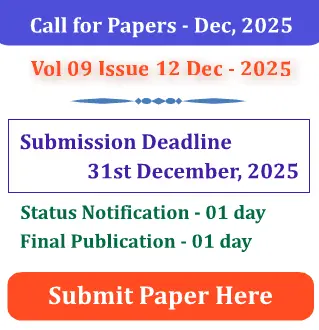- Version
- Download 100
- File Size 478.09 KB
- File Count 1
- Create Date 17/07/2025
- Last Updated 17/07/2025
A Study On Forest Community Structure And Soil Quality In Relation To Forest Density In Assam
Yogesh, Mr.Abhishek Kr Upadayay (Asst.Professor)
M.Tech Environmental Engineering Department, Mewar University Chittorgarh, Rajasthan
ABSTRACT
Forests play a crucial role in maintaining healthy environment by regulating the hydrological cycle, acting as natural filters by capturing and absorbing pollutants from the air, recharging groundwater reserves, reducing soil erosion, and preventing sedimentation in rivers and streams. Forests are natural carbon sinks and mitigate climate change by reducing concentration of greenhouse gas (GHGs). However, since the last few decades, forests all over the world are under tremendous pressure owing to deforestation, changing land use pattern, infrastructure development, over exploitation of forest resources etc. These problems are also prevalent in the Eastern Himalayan Region including Northeast India. In order to understand the dynamics of loss of forest cover and changing land use due to anthropogenic pressure and its impact on forest community structure, forest fragmentation and habitat loss, forest biomass and forest soil a study has been carried out in the twin reserve forest - Barduar Reserve Forest and Mayang Hill Reserve Forest (RF) of Kamrup West Forest Division, Kamrup District, Assam, India. The study area is located 64 km (approx.) away from Guwahati city in the Assam Meghalaya border enclosing the historic tectonic lake Chandubi beel. Forest cover mapping has been carried out using Landsat time series data (TM/EMT+/OLI) for the year 1990-91, 2000-01, 2010-11 and 2015-17 in GIS environment which found that there has been gradual decline of very dense forest (forest cover > 70%) by 413.04 ha, dense forest (forest cover 40 70%) by 203.44 ha. On the contrary, open forest (forest cover 10 - 40%) has increased by 254.05 ha and scrub (forest cover <10%) by 149.42 ha during the period 1990 2017. Agricultural land and rural settlement have expanded continuously. Bamboo brakes have been extracted to the extent of wiping it off from Mayang Hill RF during 2010 2017. The annual deforestation rate has been highest in the decade 2000 - 2010 with 0.0373% per year in very dense forest (cover >70%), 0.0099% per year in dense forest (cover 40- 70%). Deforestation is prominent in the low elevation, low slope regions of the two RFs and on 1km buffer area of the roadsides passing by the RFs. These have led to fragmentation of forests in the study area. There has been continuous forest fragmentation from 1990 to 2017, large core forest have witnessed decline from 2759.85 ha in 1990 to 1671.29 in 2017. Edge forest gradually increased from 1397.83 ha in 1990 to 1547.17 ha in 2017. Socio-economic conditions of the inhabitants of 17 Forest Villages (FV) grouped into 3 clusters was studied following random sampling through focus group discussion with the Gaon Bura (Village Headmen), questionnaire survey and personal interviews with the inhabitants to understand their social and economic condition and dependency on the forest and its resources for livelihood and sustenance which revealed that the diminishing status of bamboo brakes, very dense forest (cover >70%), dense forest (cover 40-70%) is due to the collection of forest products (mostly NTFP) by the village inhabitants for meeting their energy and housing material requirement as well livelihood and sustenance. The average monthly income of the surveyed households is between 5,000 6,000 INR and they meet their additional livelihood requirements through forest resources. 59% of the 85 households surveyed collect firewood, bamboo, and wild edibles etc., from the forest. 39% collects only firewood and 74% of the households dependent on firewood from forest as fuel







